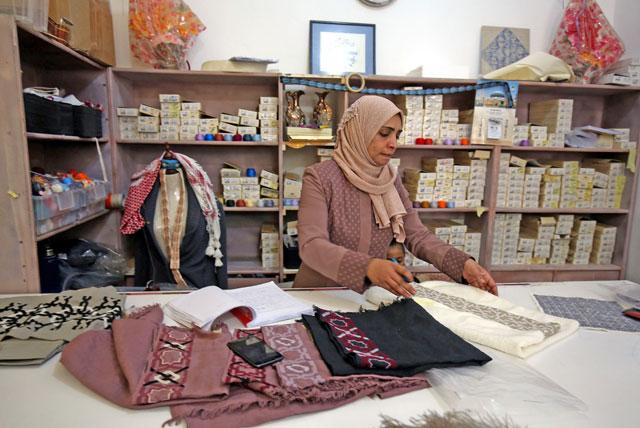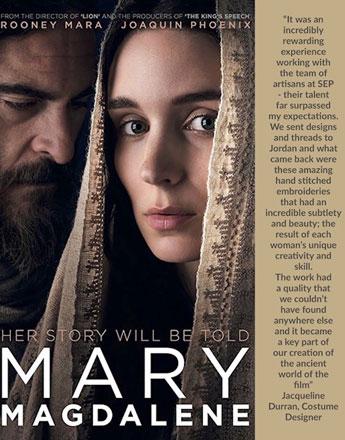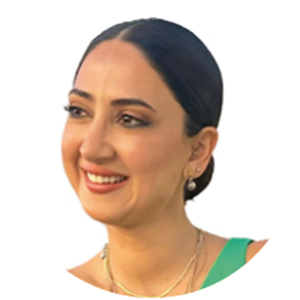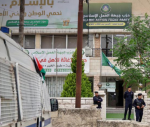You are here
From Palestinian refugee camp to London, Paris, Dubai boutiques
By AFP - Nov 27,2017 - Last updated at Nov 28,2017

A Palestinian woman embroiders at a workshop in Jordan’s Jerash Palestinian refugee camp, which was established to host more than 11,000 Palestinians who fled the Gaza Strip during the 1967 Arab-Israeli war, north of Amman, on November 5 (AFP photo)
JERASH CAMP — In a small workshop in a Palestinian refugee camp in Jordan, Halima Al Ankassuri embroiders traditional patterns onto a blue shawl, destined for sale in an upmarket Paris, London or Dubai boutique.
The 54-year-old mother of seven describes her work as “modern products with shimmering colours, embroidered with Palestinian and Islamic motifs”.
“I’m proud to see Europeans wearing what we produce here and to see top fashion magazines take an interest,” she said referring to the German online edition of Vogue, a large smile on her face, girded with a red veil.
The Jerash camp where she lives, in northern Jordan, was established to host more than 11,000 Palestinians who fled the Gaza Strip during the 1967 Arab-Israeli war — hence its alternative name, Gaza Camp.
Half a century on, more than 29,000 refugees live in the camp amid poverty, unemployment and crumbling infrastructure.
In 2013, Roberta Ventura, an Italian with a background in investment banking, decided to set up a social project to help women in the camp after visiting it and seeing their intricate skills close up.
SEP Jordan (SEP for social enterprise project) aims to “change lives not only of dozens but over time, hundreds, perhaps thousands of women”, she wrote in a message to AFP.
On the workshop’s tables lay traditional keffiyeh headscarves with inscriptions of different colours, along with cashmere shawls and handbags.
“The project started with 10 women and now they are 300,” said the programme’s director, Nawal Aradah. “We make products on request: shawls, handbags, towels, sheets and all kinds of household decor.”
Every two months, 11 to 14 cartons containing 190 to 270kg of goods are sent to stores in Paris, London or Dubai.
They are also sold inside the Palestinian territories — in the Israeli-occupied West Bank city of Bethlehem, said the project’s regional manager, Mahmoud Al Haj.
In a shop inside a large Amman hotel, prices range from JD20 to JD300, according to Haj, who said “most buyers are foreign tourists”.
Source of income
For women in the workshop, embroidery is an important source of income.
“We all suffer from poverty in this camp,” Ankassuri said. “This work helps us to improve our lives, even if we charge for our products individually at low prices, from JD15 to JD20.”
Every product she embroiders requires at least a week’s work.
She says she has pain in her hands, but enjoys being around other women in the workshop.
Ventura said the women’s “unique talent” is “appreciated around the world”.
More than 2 million Palestinian refugees are registered with the United Nations in Jordan.
Ankassuri and her colleagues learned the art of embroidery from their mothers and grandmothers. Each region of historic Palestine has its own motifs and patterns.
As well as presenting Palestinian history and culture to a new audience, their craftwork “helps promote the cause of our people”, Aradah said proudly.
A flag and a map hang on the walls of the workshop, reminding the women of their link with the land of their birth or, for the younger ones, that of their ancestors.
“Every woman here has a story,” Aradah said.
“This work helps them to send their children to school, change the furniture in their homes and improve their living conditions, especially since many husbands do not work.”
Hiba Al Hudari, who was weaving a blue purse with Islamic inscriptions, said the workshop had become “a second home”.
The 37-year-old mother of six said she earns about JD150 a month. “With that, I help my husband, who’s a mechanic, provide for our household,” she said.
Related Articles
AMMAN — The creations of 27 Palestinian craftswomen from Jerash camp will be featured in the Universal Pictures’ film “Mary Magdalene”, an i
AMMAN — Deputising for HRH Princess Muna, HRH Princess Sana Asem on Tuesday inaugurated an exhibition featuring embroidery from Jordan’s sou
Palestinian history is reflected in so many facets of life, especially in its fashion; its embroidery recounts a narrative of rich heritage and culture passed from one generation to another. I decided to focus on this theme for my make-up pages this month. I chose three local fashion and textile designers Lina Lama Burgan, May Khoury and Dana Rimawi, as my muses.


















